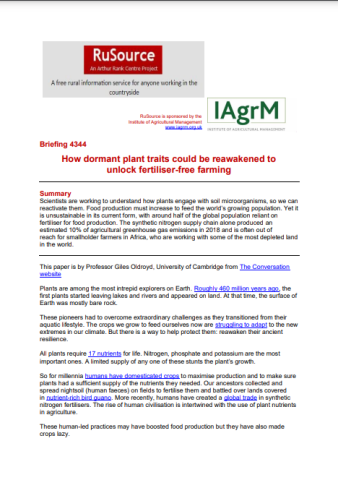Summary
Scientists are working to understand how plants engage with soil microorganisms, so we can reactivate them. Food production must increase to feed the world’s growing population. Yet it is unsustainable in its current form, with around half of the global population reliant on fertiliser for food production. The synthetic nitrogen supply chain alone produced an estimated 10% of agricultural greenhouse gas emissions in 2018 and is often out of reach for smallholder farmers in Africa, who are working with some of the most depleted land in the world.


